Historical Development of the Constitution of India | Indian Polity for UPSC CSE PDF Download
Before 1947, India was divided into two main entities – British India which consisted of 11 provinces, and the Princely states ruled by Indian princes under subsidiary alliance policy. The two entities merged together to form the Indian Union, but many of the legacy systems in British India are still followed even now. The historical underpinnings and evolution of the Indian Constitution can be traced to many regulations and acts passed before Indian Independence.
Acts and Reforms Introduced Before 1858
Following Acts and reforms were introduced for the governance of India from time to time before 1858.
Regulating Act of 1773
- The first step was taken by the British Parliament to control and regulate the affairs of the East India Company in India.
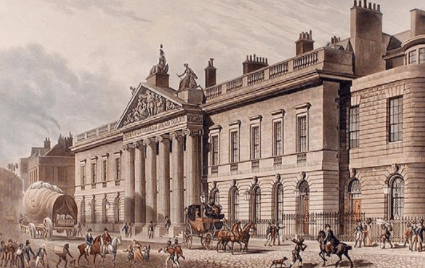 East India House, London
East India House, London
- It designated the Governor of Bengal (Fort William) as the Governor-General (of Bengal).
- Warren Hastings became the first Governor-General of Bengal.
- Executive Council of the Governor-General was established (Four members). There was no separate legislative council.
- It subordinated the Governors of Bombay and Madras to the Governor-General of Bengal.
- The Supreme Court was established at Fort William (Calcutta) as the Apex Court in 1774.
- It prohibited servants of the company from engaging in any private trade or accepting bribes from the natives.
- Court of Directors ( the governing body of the company) should report its revenue.
Pitt’s India Act of 1784
- Distinguished between commercial and political functions of the company.
- Court of Directors for Commercial functions and Board of Control for political affairs.
- Reduced the strength of the Governor General’s council to three members.
- Placed the Indian affairs under the direct control of the British Government.
- The companies' territories in India were called “the British possession in India”.
- Governor’s councils were established in Madras and Bombay.
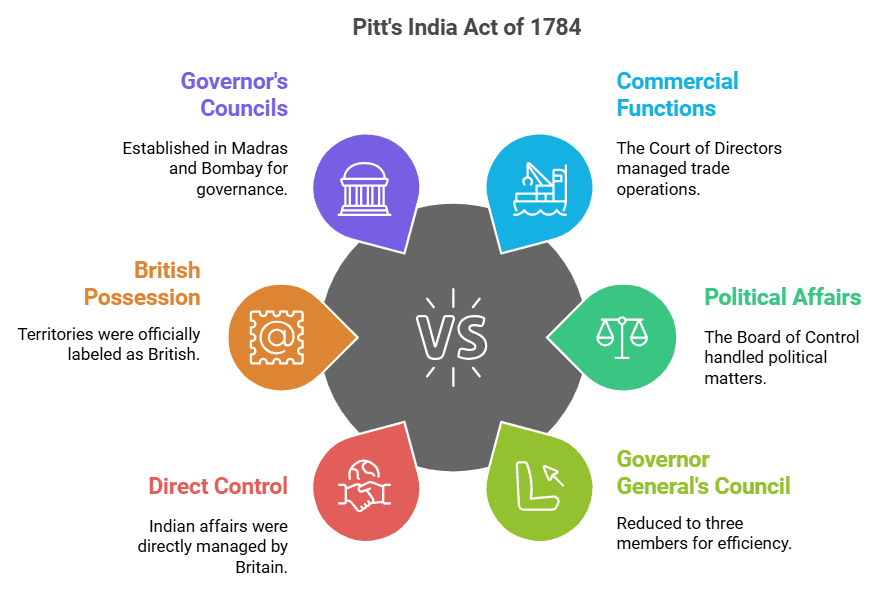
Charter Act of 1813
- The Company’s monopoly over Indian trade terminated; Trade with India open to all British subjects.
Charter Act of 1833
- Governor-General (of Bengal) became the Governor-General of India.
- The first Governor-General of India was Lord William Bentinck.
- This was the final step towards centralization in British India.
- Beginning of a Central legislature for India as the act also took away legislative powers of Bombay and Madras provinces.
- The Act ended the activities of the East India Company as a commercial body and it became a purely administrative body.
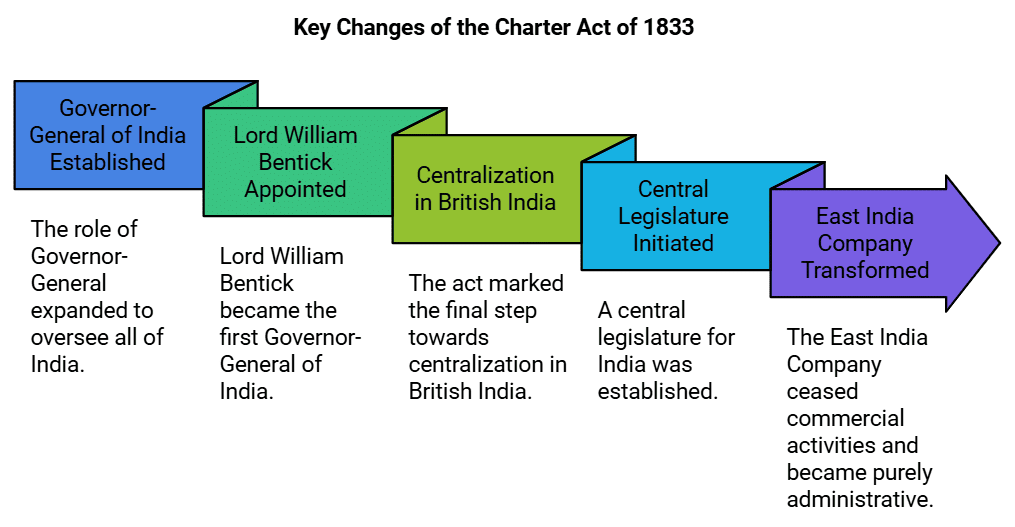
Charter Act of 1853
- The legislative and executive functions of the Governor-General’s Council were separated.
- 6 members in Central legislative council. Four out of six members were appointed by the provisional governments of Madras, Bombay, Bengal, and Agra.
- It introduced a system of open competition as the basis for the recruitment of civil servants of the Company (Indian Civil Service opened for all).
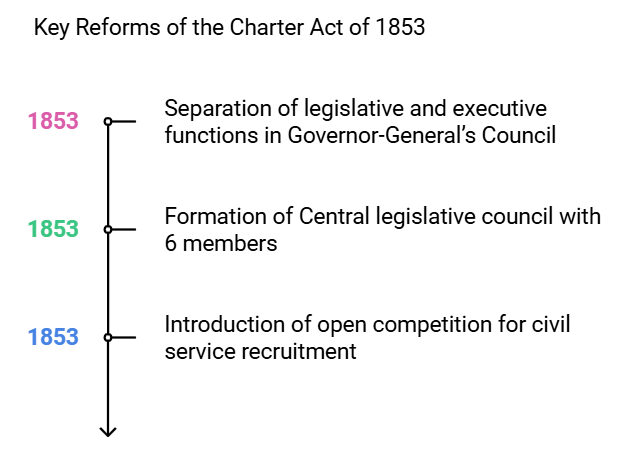
The Company Rule (1773–1858)
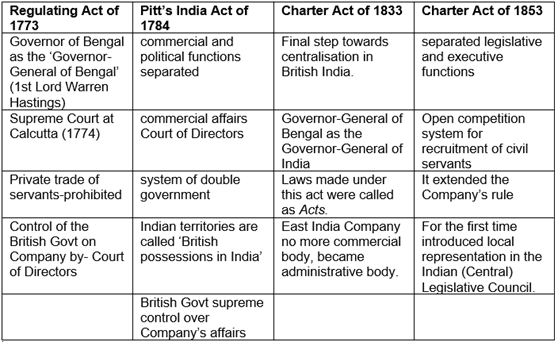
Acts and Reforms Introduced after 1858
Following Acts and reforms were introduced by the British Government for the governance of India from time to time after 1858, and up to the making of the Constitution
1. The Government of Indian Act, 1858
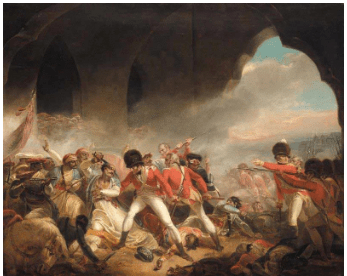 Changes brought by the Government of India Act, 1858
Changes brought by the Government of India Act, 1858
- In 1858, when the British Crown under Queen Victoria assumed sovereignty over India from the East India Company, the Parliament enacted the first statute for the governance of India under the direct rule of the British government, the Government of India Act, 1858.
The essential features of this Act were
- The Board of Control and the Court of Directors were abolished, and instead, the powers of the Crown were to be exercised by the Secretary of State for India, assisted by a Council of fifteen members (known as the Council of India). It was composed exclusively of people from England.
- The Governor-General was to be called Viceroy from then on. The Secretary of State, who was responsible to the British Parliament, governed India through the Governor-General, assisted by an Executive Council which consisted of high officials of the government. Thus, the administration of the country was not only unitary but rigidly centralized. There was no separation of functions, and all the authority for the governance of India– civil and military, executive and legislative– was vested in the Governor-General in Council, who was responsible to the Secretary of State.

- The control of the Secretary of State over the Indian administration was absolute. Subject to his ultimate responsibility to the British Parliament, he wielded the Indian administration through the Governor-General as his agent and his was the last word, whether in matters of policy or of other details.
- The entire machinery of administration was bureaucratic, totally unconcerned about public opinion in India.
(i) Indian Councils Act, 1861
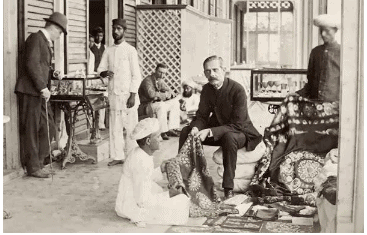 Indian Councils Act, 1861
Indian Councils Act, 1861
The improvements made by this Act were:
- The Governor-General was empowered to frame rules for the more convenient transaction of business in the Legislative Council.
- A Portfolio system was introduced in the Government of India (introduced by Lord Canning).
- The Governor-General's Executive Council, which was so long composed exclusively of officials, now included certain additional non-official members, while transacting legislative business as a Legislative Council. Some of the seats for non-officials were offered to the natives of high rank.
- The members of the Legislative Council were nominated and their functions were confined exclusively to a consideration of the legislative proposals placed before it by Governor-General. It could not, in any manner, criticize the acts of the administration or conduct of the authorities.
- The legislative powers were restored to the Presidencies of Madras and Bombay. But the laws passed by the Provincial Councils became valid only after receiving the assent of the Governor-General.
- The Governor-General was empowered, during an emergency, to issue ordinances which were to have the same authority as Acts made by the Legislative Council.
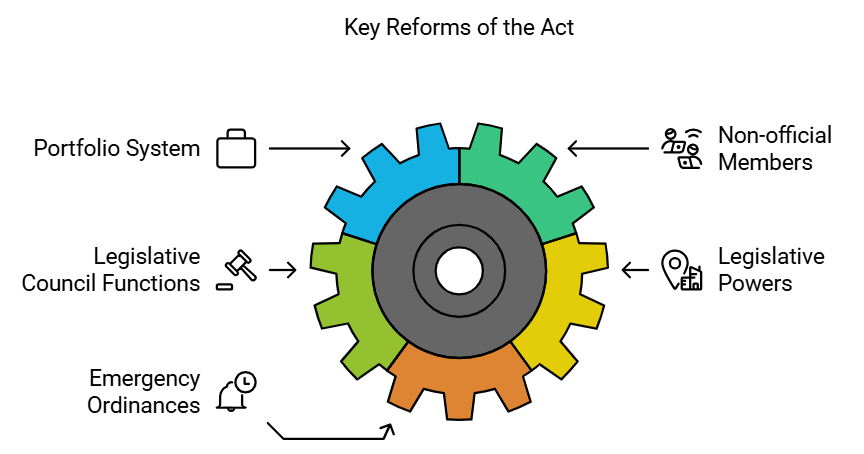
(ii) Indian Councils Act, 1892
- This act introduced two improvements upon the Act of 1861 as regards the Indian and Provincial Legislative Councils. These were-
(i) Though the majority of official members were retained, the non-official members of the Indian Legislative Council were henceforth to be nominated by the Bengal Chamber of Commerce and the Provincial Legislative Councils, while the non-official members of the Provincial Councils were to be nominated by certain local bodies such as universities, district boards, municipalities, thus introducing the principle of representation.
(ii) The Council was to have the power of discussing the annual budget to the Executive (but did not have the power to put questions).
(iii) Indian Councils Act, 1909
- Also known as Morley-Minto reforms, after the names of the then Secretary of State for India (Lord Morley) and the Viceroy (Lord Minto). The act made the first attempt to introduce a representative and popular element in the governance of India.
- The salient features of the Act are:
(i) For the first time, Indians were included in the Executive Councils of the Governor-General and Governors.
(ii) Central and Provincial Legislative Councils were enlarged but the official majority was maintained in the case of central government whereas it was gone in the provincial government.
(iii) The power of the Legislative Council was increased by this Act by giving them the opportunity of influencing the policy of the administration by moving resolutions on the Budget, and on any matter of public interest, save certain specified subjects, such as the Armed Forces, Foreign Affairs and the Indian States.
(iv) For the first time, a separate representation of the Muslim community was granted, thus sowing the seeds of separatism that eventually led to the partition of the country.
2. The Government of Indian Act, 1919
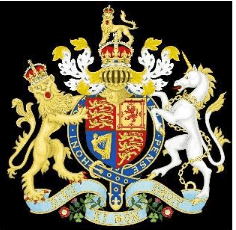 The Government of Indian Act, 1919
The Government of Indian Act, 1919
- The Indian National Congress which, established in 1885, was so long under the control of Moderates, became more active during the First World War and started its campaign for self-government (known as the 'Home Rule' movement). As a result, the British government made a declaration called the Policy of 1917.
- In this declaration, the government promised the responsible government to India as soon as possible after the War. But instead of introducing any responsible form of government in India, it came forward with its 1919 Reforms (also called Montague- Chelmsford reforms) which was formulated by the then Secretary of State for India (Mr. E.S. Montague) and the Governor-General (Lord Chelmsford).
- Dyarchy was introduced in the provinces. For the first time, Indians were given some share of power in the provincial administration, however little it was. The administration of the provinces was divided into two parts– Reserved and Transferred.
- The Reserved subjects were put directly under the British Governors while the Transferred half were administered by Indian ministers. The legislatures had official and elected members. Bicameral Central Legislature was established – the lower chamber called the Legislative
- Assembly with 144 members (104 elected) having a non-official majority and the upper chamber called the Council of State with 60 members (34 elected). This Central Legislature continued till 1947 when power was transferred to Indian hands. The electorates were, however, arranged on a communal and sectional basis developing the Morley-Minto device further.
- However, these reforms failed to satisfy the political aspirations of India because no responsible government as promised in the 1917 declaration was granted. In fact, all powers were concentrated in the hands of the Governor-General at the Centre and the Governors in the Provinces. The Ministers worked under the pleasure of the Governors and were subject to their overriding authority. As a consequence, the political movement became militant and radical. From then started the Gandhian era in Indian politics.
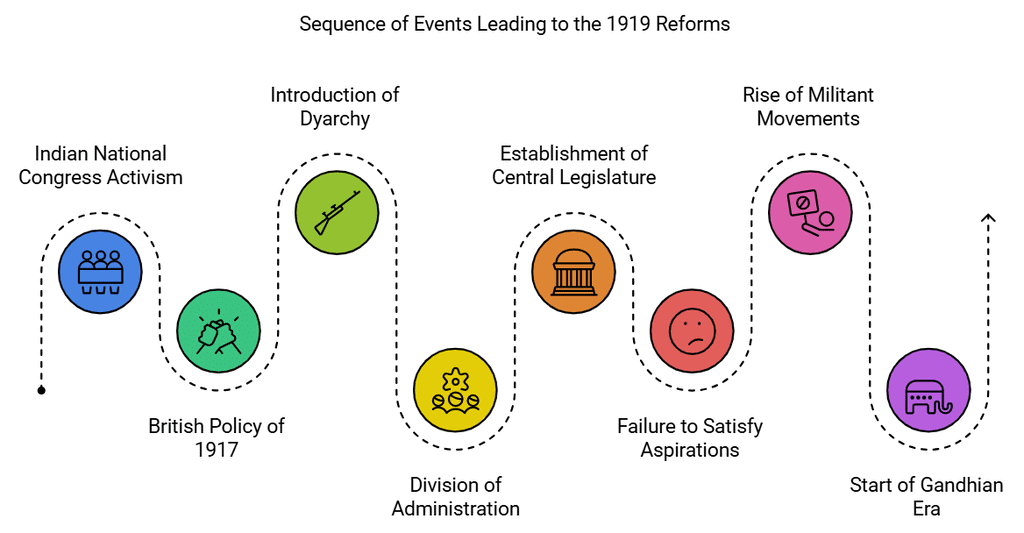
3. The Government of Indian Act, 1935
- The Government of India Act, 1935 was passed in 1935 and came into operation on April 1, 1937.
- It proposed an All-India Federation of British Indian provinces and princely states, though the federation never came into effect as the princely states did not join.
- The Act introduced Provincial Autonomy, ending Dyarchy in the provinces and making ministers responsible to the elected legislatures.
- It extended Dyarchy to the Centre, dividing subjects into Reserved and Transferred categories.
- The Act provided for the separation of Burma (Myanmar) from India and created two new provinces — Sindh and Orissa.
- The provincial part of the Act, which introduced autonomy, was accepted by the Congress, while the federal and central provisions were rejected as undemocratic.
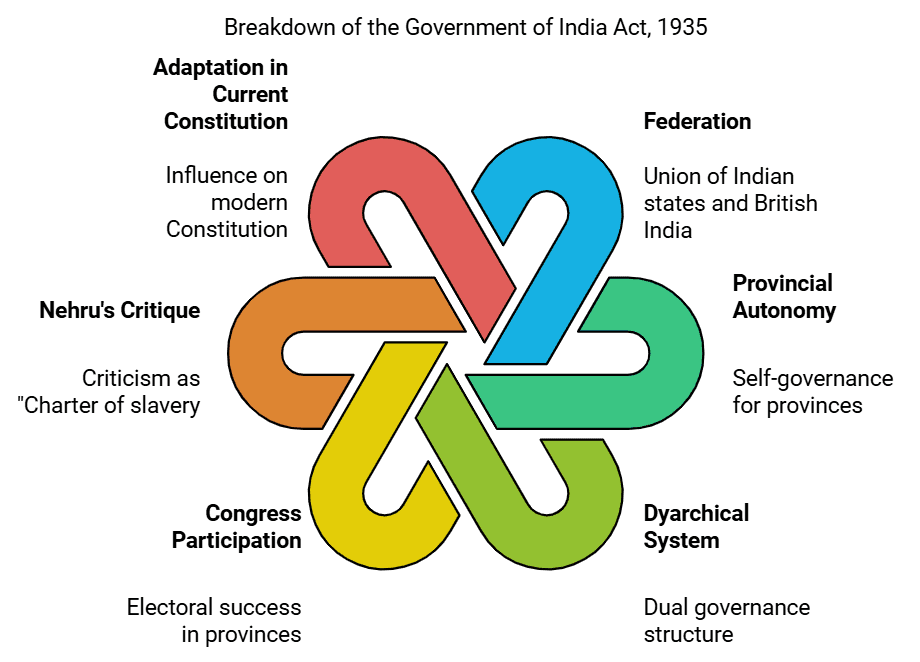
- The Congress took part in the elections to the provincial assemblies and won a thumping majority in a number of provinces. It formed governments either independently or in cooperation with other groups in eight out of the 11 provinces. The federal part of the Act never came into operation.
- This Act was described by Jawaharlal Nehru as a "Charter of slavery". The executive was armed with wide discretionary and overriding authority. In the Centre, the native States were to join a federation and would have always sided with the British government against the nationalist forces. Except for the Hindu Mahasabha, all other parties had rejected the central part of the Act.
- However, the Congress participated in the 1937 elections and swept the polls to form governments in many provinces. But at the outbreak of the Second World War, the Congress ministries resigned on the issue of Indian participation in the War. The present Constitution is to a very large extent an adaptation of the 1935 Act to the changed conditions of free India.
August Offer
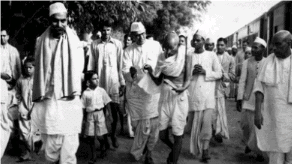 August Offer, 1940
August Offer, 1940
- The British government made an offer, known as the August Offer, in August 1940. It promised dominion status after the Second World War. The Constitution was to be framed by Indians subject to the due fulfillment of obligations which Great Britain's long connections with India had imposed upon her.
- During the War period, the Executive Council of the Governor-General was to be expanded to include the popular representatives of the people of India. Congress rejected the offer. Gandhiji started individual Satyagraha.
- Instead of reacting favorably and initiating discussions for an amicable settlement, the government of India declared an emergency all over India, and the administration of the whole country was concentrated in the hands of the Governor-General through the Governors and the Indian Civil Service. A series of new emergency ordinances were passed to meet any opposition from the popular forces in the country. Most of the national leaders were arrested and sent to jail.
CRIPPS MISSION
- Dramatic change in British attitude towards India within two years.
- Reasons for change:
- Disastrous defeats suffered by British forces in various theatres of War.
- Unfavorable international situation, with Japan nearing the Indian empire's doorstep.
- Sir Stafford Cripps sent to India in early 1942 by the British government for a special mission.
- Objective: Finding a "just and final" solution to the Indian political problem.
- Cripps' proposals:
- Long-term solution for Indian freedom, vague in nature.
- Immediate establishment of an interim government at the Centre.
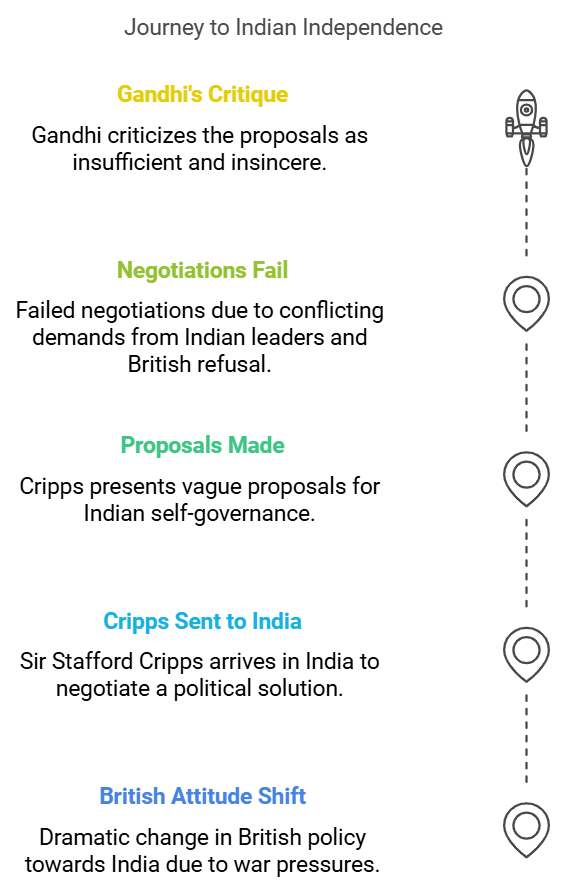
- Long-term proposals included complete transfer of power to Indians after the War.
- Negotiations failed:
- Indian National Congress demanded complete Indianisation of Governor General's Executive Council.
- British rulers refused to surrender Defence portfolio to Indians.
- Mahatma Gandhi referred to the proposals as a "postdated cheque".
Quit India Resolution
The failure of the Cripps Mission led to acute discontent in India. It exposed the intentions of the British rulers.
On August 8, 1942, the All India Congress Committee passed the famous "Quit India" resolution for the immediate ending of the British rule and sanctioned "the starting of a mass struggle on nonviolent lines on the widest possible scale."
It was Gandhiji who piloted the resolution in the Congress Committee.
Wavell Plan
Another abortive effort to solve the political deadlock in Indian was made in 1945. Lord Wavell invited the leaders of all sections of political opinion. A conference was held at Shimla. The Wavell plan in its essence was the complete Indianisation of the Executive Council. The caste Hindus and Muslims were to be represented on the basis of parity.
Sir Archibald Wavell
The Congress, being a national organisation, insisted on the nomination of its representatives from all the communities. The conference met with failure because neither the Congress nor the League was prepared to deviate from the stand taken by them.
Cabinet Mission Plan
Labour Party's Intent for Transfer of Power
- Labour Party in power after World War II aimed to transfer power to Indians as a political expedient measure.
Cabinet Mission Plan
- Mission sent to India with three Cabinet Ministers: Sir Stafford Cripps, Lord Penthic Lawrence, A.V. Alexander.
- Objective: Announced the Cabinet Mission Plan for India's future political setup.
Rejecting Partition
- Plan rejected All India Muslim League's demand for partition, creation of sovereign Pakistan.
Confederation with Autonomy
- Plan envisaged a confederation with autonomous states.
- Central Government: Powers in Defence, External Affairs, Communications.
- Groups Autonomy: Free to have separate constitutions, allowing autonomy for Hindus and Muslims.
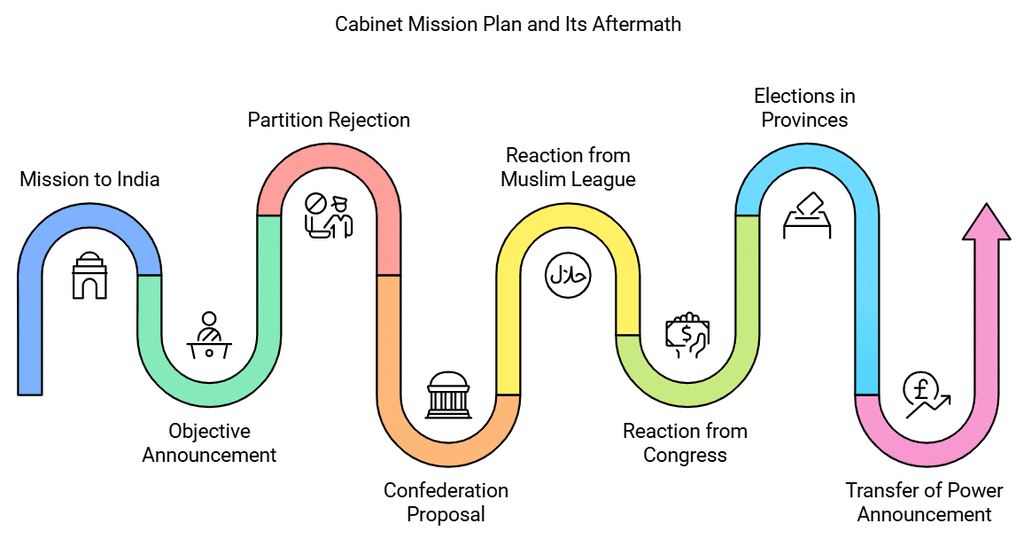
Long-Term and Short-Term Components
- Long-Term: Future political setup on a permanent basis.
- Short-Term: Immediate establishment of an Indian government.
Reactions to the Plan
- Muslim League: Accepted both long-term and short-term.
- Congress: Accepted only the long-term aspect.
- Later Actions:
- Muslim League rejected the plan, opting for direct action.
- Elections in British Indian provinces completed, popular ministries formed based on 1935 Constitution Act.
- Interim cabinet at Centre unresolved, caretaker government formed.
- Lord Wavell invited Nehru in August 1946 to form interim government.
- Interim government formed on September 2, 1946, with initial Muslim League refusal and later acceptance.
- Muslim League boycotted Constituent Assembly.
- Attempt to establish collective responsibility in interim government failed due to Muslim League's hostility.
- Muslim League later withdrew from interim government, demanded Constituent Assembly dissolution.
Transfer of Power Announcement
- February 20, 1947: British PM Attlee announced intent to transfer power to Indians by June 1948.
- If no agreed solution by then, British would leave, hand over power.
Change in Leadership
- Lord Wavell replaced by Lord Louis Mountbatten as Governor-General for transfer of power steps.
Mountbatten Plan
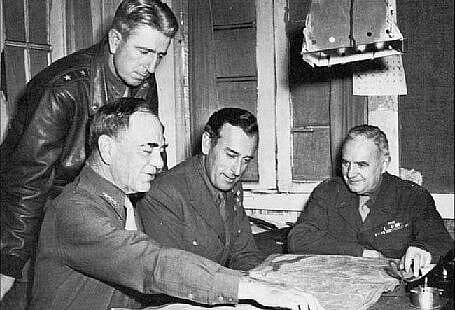 Lord Mountbatten while proposing his plan
Lord Mountbatten while proposing his plan
- On February 20, 1947, the British government made a historic announcement declaring its intention to transfer power to responsible Indian hands not later than June 1948. Lord Mountbatten, immediately after assumption of office, plunged himself into prolonged negotiations with party leaders.
- With a view to facilitating this transfer, and at the same time to accommodate the rival claims of the two leading communities, he devised the plan of partition of the country into India and Pakistan. Creation of Pakistan was assented to by both the parties and on June 25, 1947, Lord Mountbatten made the announcement of the agreed plan.
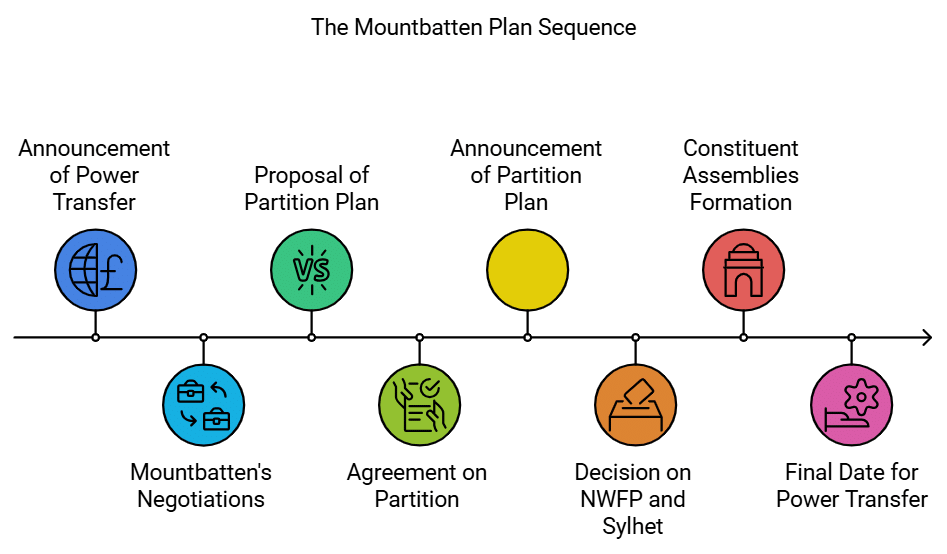
- According to this plan, Punjab and the Bengal provinces were partitioned between the two new nations. People of the NWFP and the Sylhet district of Assam were given the right to decide through plebiscite whether they wished to join Pakistan or India. Boundary Commissions were to be set up for partitioning the provinces concerned.
- The old Constituent Assembly minus the Muslim League members was to carry on its work of framing the Constitution of India, and Pakistan was to have a separate Constituent Assembly. August 15, 1947 instead of June 1948, was fixed as the final date for transfer of power.
Indian Independence Act, 1947
As a result of the acceptance of the Mountbatten plan, the Indian Independence Act, 1947 was passed by the British Parliament on July 18, 1947. The main provisions of this Act are as follows:
(i) New dominions– The Act set up two dominions– India and Pakistan– from August 1947. Article 2 of the Act determined the territories of the two Dominions.
The Pakistan Dominion was to consist of Baluchistan, Sindh, West Punjab, N.W.F.P., and East Bengal, including the Sylhet district of Assam. The remaining
parts of British India were to constitute the Indian Dominion.
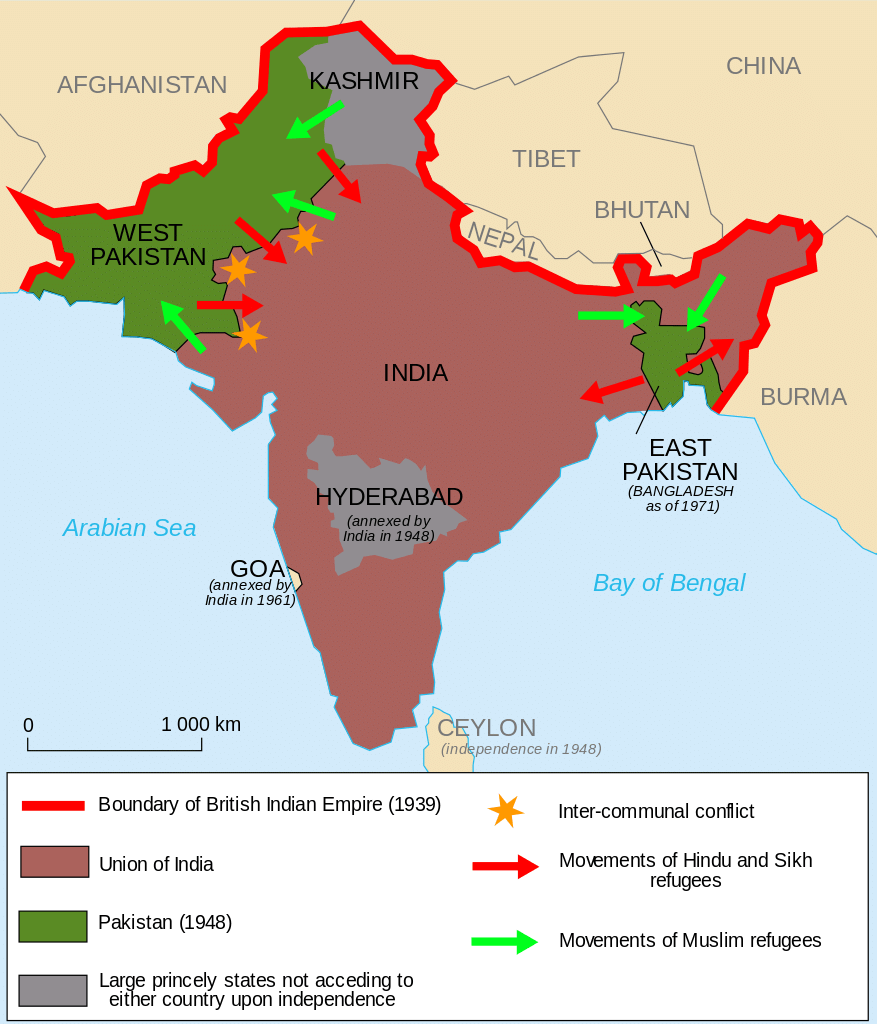 India and Pakistan at the time independence (Indian Independence Act, 1947)
India and Pakistan at the time independence (Indian Independence Act, 1947)
India and Pakistan at the time of independence (Indian Independence Act, 1947). Note that the territory of the two States was significantly altered by the accession of the Princely States
The fate of N.W.F.P., whether it was to join Pakistan or not, was to be decided by a referendum before August 15, 1947. Similarly, a referendum was to
be held in the Sylhet district of Assam.
(ii) Governor-General– The Act provided that for each Dominion, "there shall be a Governor-General to be appointed by His Majesty for the purpose of the governance of the Dominion." The same person, unless the Legislature of each of these Dominions passed a law otherwise, could be a Governor-General of both the Dominions.
(iii) Legislatures– Until a new Constitution was framed for each Dominion, the Act made the existing Constituent Assemblies the Dominion legislatures for the time being. The Dominion legislatures were given full powers to make laws for their Dominions.
(iv) Temporary Provisions as to the Government of each Dominion– The Constituent Assembly of each Dominion was to act as Legislature of that Dominion. It was also to exercise powers for framing the Constitution of the Dominion.
Except insofar as the Constituent Assembly enacted laws, each dominion was to be governed so far as possible in accordance with the Government of India Act, 1935. However, discretionary and individual judgment powers of the Governor-General and Governors under that Act were to lapse.
(v) Indian States– The sovereignty of the British Crown over the Indian States lapsed with effect from August 15, 1947. Along with this, the treaties and agreements between his Majesty and the Indian States also lapsed. The States thus became sovereign entities. The States were given the freedom, if they so wished, to join India or Pakistan, or to remain as independent entities.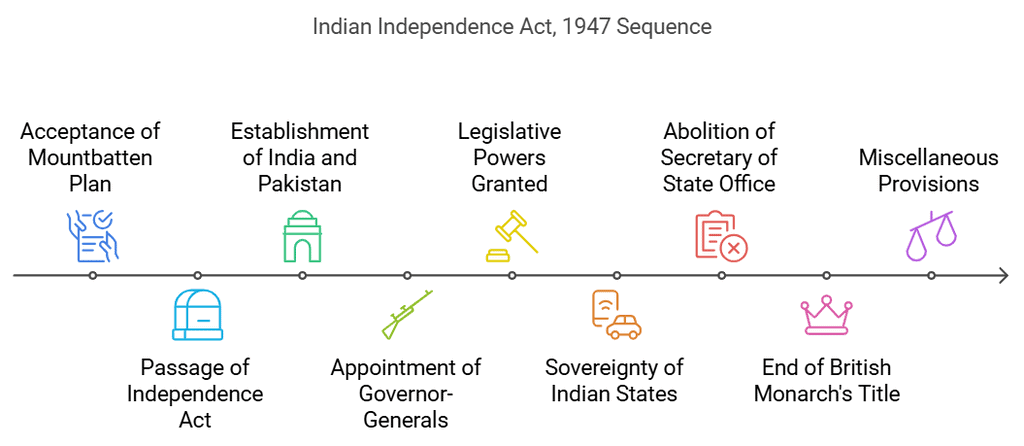 (vi) Tribal Areas– As in the case of Indian States, the treaties and agreements between His Majesty and any person having authority in the tribal areas lapsed; and so did the obligations, rights and functions of His Majesty under such agreements and treaties.
(vi) Tribal Areas– As in the case of Indian States, the treaties and agreements between His Majesty and any person having authority in the tribal areas lapsed; and so did the obligations, rights and functions of His Majesty under such agreements and treaties.
(vii) Abolition of the Office of Secretary of State for India– The office of the Secretary of State for India and his advisory board were abolished and instead the Secretary of Commonwealth Relations was to handle matters between the dominions and Great Britain.
(viii) British Monarch was no longer Emperor of India– The title Emperor of India was deleted from the Royal style of the British Monarch.
(ix) Miscellaneous– The other provisions of the Act dealt with the Civil Services, the Armed Forces, the British Forces in India, etc. The rights and privileges of the Civil Services were protected. Provision was made for division of Armed Forces and retention of the authority and jurisdiction of His Majesty over the British Forces stationed on the territories of India and Pakistan.
|
171 videos|999 docs|259 tests
|
FAQs on Historical Development of the Constitution of India - Indian Polity for UPSC CSE
| 1. What were the key acts and reforms introduced in India before 1858? |  |
| 2. What reforms and acts were introduced in India after 1858? |  |
| 3. What was the August Offer, and what was its significance? |  |
| 4. What was the Cripps Mission, and why did it fail? |  |
| 5. What was the significance of the Indian Independence Act of 1947? |  |

















